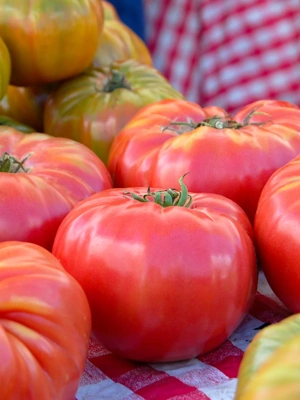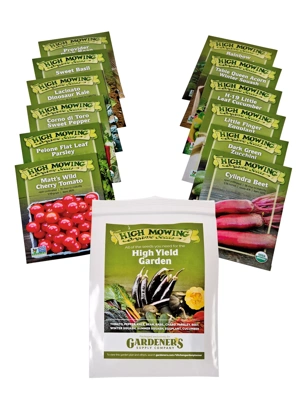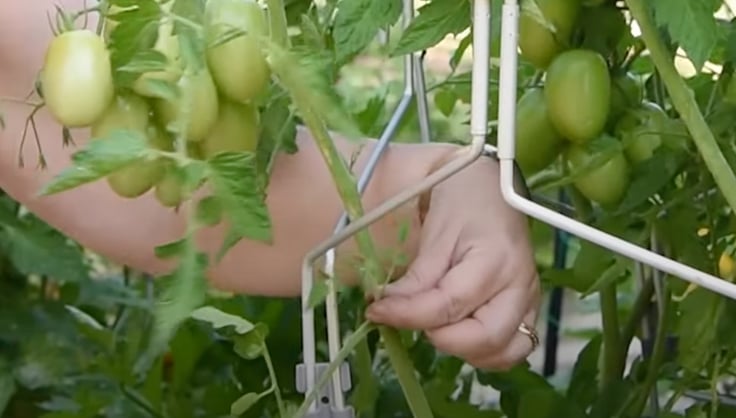Grow Purple Tomatoes
New, True Purple Tomatoes Turn Heads in the Garden
Back in 2013, a new tomato variety called Indigo Rose was introduced. In June of that year, we published this post on our blog:
What's the garden's most fashionable color this growing season? It's purple, at least as far as tomatoes are concerned. A new variety of tomato, called Indigo Rose for its deep purple, nearly black skin, is gaining popularity with gardeners for its unusual color and its potential health benefits.
“Last year, I planted Indigo Rose in my front border, and everyone was fascinated with it,” says Rosalind Creasy, an edible landscaping pioneer, author, lecturer and photographer. “The big thing people got excited about was this deep black, eggplant-colored tomato.”.
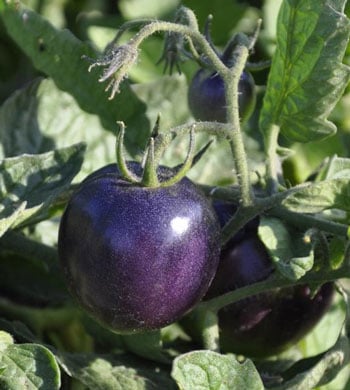 A ripe Indigo Rose tomato. Photo: Tiffany Woods, Oregon State University
A ripe Indigo Rose tomato. Photo: Tiffany Woods, Oregon State UniversityThe Indigo Rose variety of true purple tomatoes was created at Oregon State University (OSU) using conventional crossing and selection techniques, and released in 2012 in limited numbers. In their quest to develop non-genetically engineered tomatoes with high levels of antioxidants, OSU’s researchers bred the Indigo Rose to have an abundance of anthocyanins — the same pigments that give blueberries their deep blue hue — and shades of blackish purple in the tomato’s outer flesh and skin. Anthocyanins are also flavonoids, compounds believed to be powerful antioxidants with benefits for human health.
Other dark-skinned tomatoes, such as the rose-to-purple Cherokee Purple and the brown-to-purple Black from Tula, also ripen to unusual hues, but they lack this new tomato variety’s intense purple coloring and anthocyanin punch.
Jim Myers, an OSU horticulture professor who helped create the Indigo Rose, says that up until now, anthocyanins were found only in the stems and leaves of homegrown tomatoes, and in the fruit of some wild species. His research team is continuing to develop additional new tomato varieties. Myers explains, “We are working to improve earliness, disease-resistance and flavor, and incorporating the high-anthocyanin into different tomato types — cherries, slicers and plum, to name a few.”
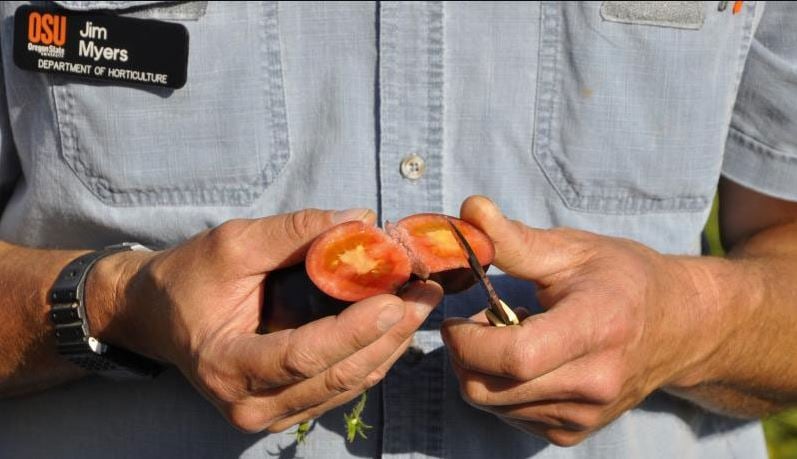 Interior of the Indigo Rose tomato variety
Interior of the Indigo Rose tomato varietyThe indeterminate Indigo Rose grows vigorously to about three feet tall and produces abundantly. The deep purple pigment develops in parts of tomatoes exposed to sunlight, while the interior flesh remains red. Gardeners can expect fully ripened, medium-sized tomatoes about 91 days after planting. “Its size is what I would call a ‘saladette’ type — about 2 ounces average fruit weight,” Myers says “From the cross that produced Indigo Rose, we had fruit ranging from large cherry size to small slicers.” Seeds from this open-pollinated variety can be saved and planted in future seasons.
As for taste, tomato lovers all have their preferences, and various factors — such as location, weather and temperature — can have an impact. Anthocyanins don’t have a noticeable flavor of their own, and the purple color doesn’t affect this tomato’s taste. Creasy mixed her first harvest with paste tomatoes in her recipes to boost flavors and take advantage of Indigo Rose’s smoky purple color. She will experiment with Indigo Rose again in 2013. “I plan to grow it in a wine barrel this year, to give it some extra heat,” Creasy says.
Antioxidant-rich Indigo Rose tomatoes are available from seed companies including Territorial Seed Company, Nichols Garden Nursery, High Mowing Organic Seeds and Johnny’s Selected Seeds.
Tips for Growing Indigo Rose
Vegetable breeder Jim Myers, who helped develop the Indigo Rose tomato at Oregon State University, offers these tips for gardeners interested in trying this anthocyanin-packed tomato:
- Because Indigo Rose is a long-season variety, gardeners who live in a cool or short-season environment should choose a sheltered spot for planting. Consider using additional protection, especially early in the growing season.
- To determine when Indigo Rose tomatoes are ripe, look for softened fruit with dull purple-brown skins and red — not green — bottoms. A shiny, blue-purple tomato isn’t quite ready to be picked.
- “Indigo Rose does not have resistance to fusarium and verticilium. Because of this, we recommend that you grow grafted plants where these diseases can be a problem,” says Myers. “In a trial we did last year, we saw yields triple on grafted plants compared to normal plants.”
Last updated: 12/08/2022
Print this Article:
Related items
Related Articles
Get the Dirt
Stay up to date on new articles and advice. Please fill out the information below.

